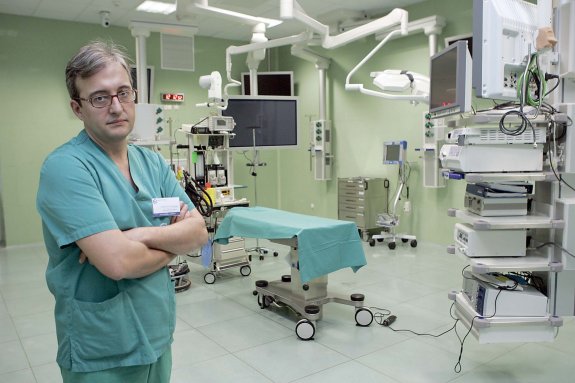Evaluation of a New Design of Antireflux-Biodegradable Ureteral Stent in Animal Model
Francisco Miguel Sánchez Margallo, Assistant Director of NANBIOSIS and Scientific Director of JUMISC, is co-authors of de article “Evaluation of a New Design of Antireflux-biodegradable Ureteral Stent in Animal Model” published by Urology.
The research were carried out in the NANBIOSIS units in the JUMISC. The purpose was to determine the effects in urinary tract of a new antireflux-biodegradable ureteral stent. Thirty six ureters belonging to 24 pigs were used. The study began with endoscopic, nephrosonographic, and fluoroscopic assessments. Three study groups of ureters (n = 12) were then specified. In group I, a biodegradable antireflux ureteral stent (BDG-ARS) was inserted in the right ureter of 12 pigs. Group II comprised the left ureter of the same animals, in which a double-pigtail stent was placed for 6 weeks. Group III ureters, belonging to 12 additional animals, were subjected to a ureteropelvic junction obstruction model that was then treated by endopyelotomy and stenting with BDG-ARS. Follow-ups were performed at 3-6 weeks and at 5 months. As result of the research none of the ureters receiving the BDG-ARS showed any evidence of vesicoureteral reflux (VUR). BDG-ARS degradation took place in a controlled and predictable fashion from the third to the sixth weeks, and no obstructive fragments appeared. No differences were found between groups I and II regarding passive ureteral dilation, but significant differences were found regarding VUR and ureteral orifice damage. BDG-ARS always maintained distal ureteral peristalsis. BDG-ARS in group III showed a 50% positive urine culture rate and a 16.6% migration rate in both BDG-ARS groups.
The scientists have demonstrated that morbidity associated with ureteral stents might be reduced as BDG-ARS avoided VUR and bladder trigone irritation, and the polymer combination and stent-braided design achieved a consistent biodegradation rate with no obstructive fragments and with uniform degradation between the third and the sixth weeks. Consequently, morbidity associated with ureteral stents might be reduced.









